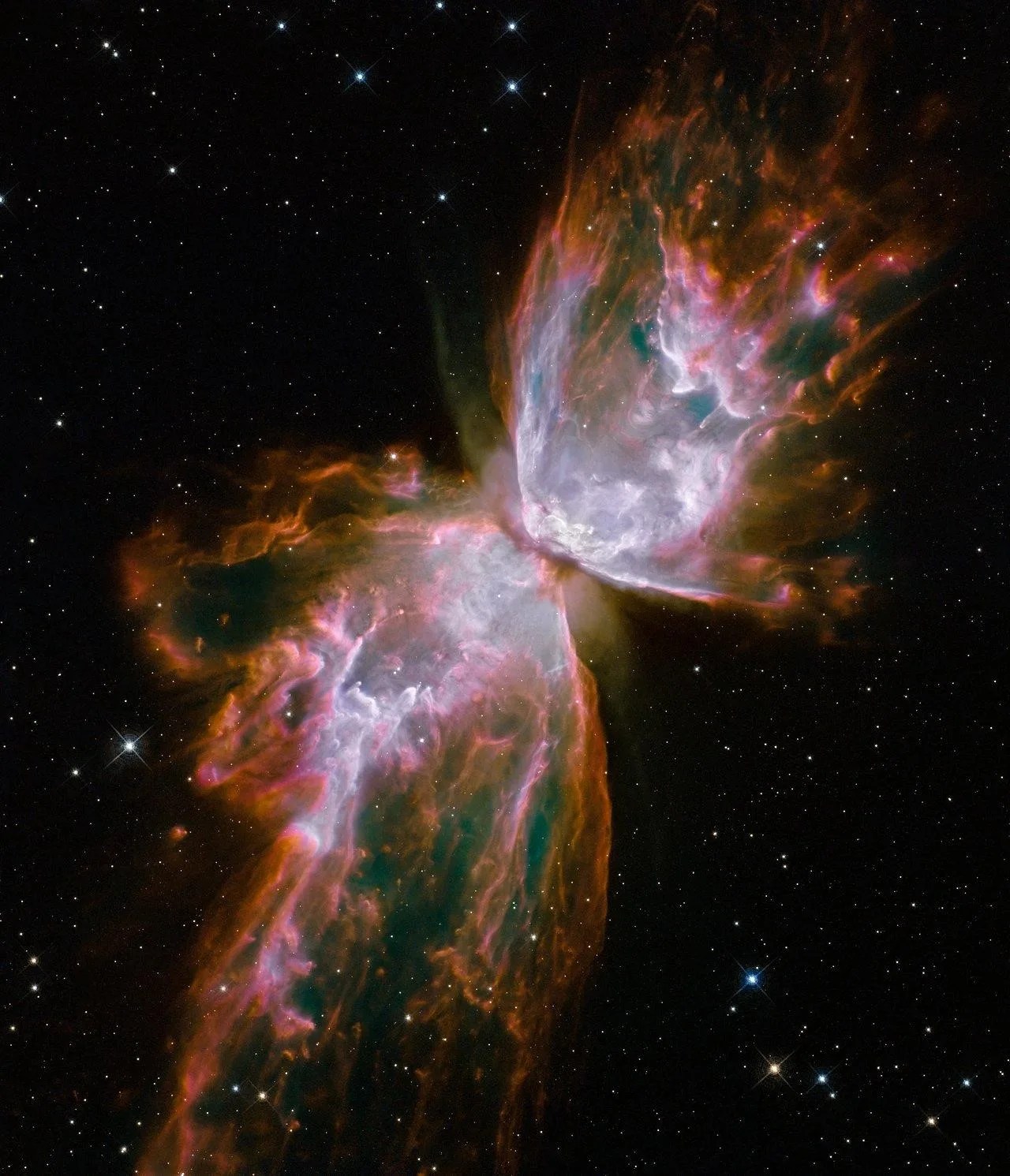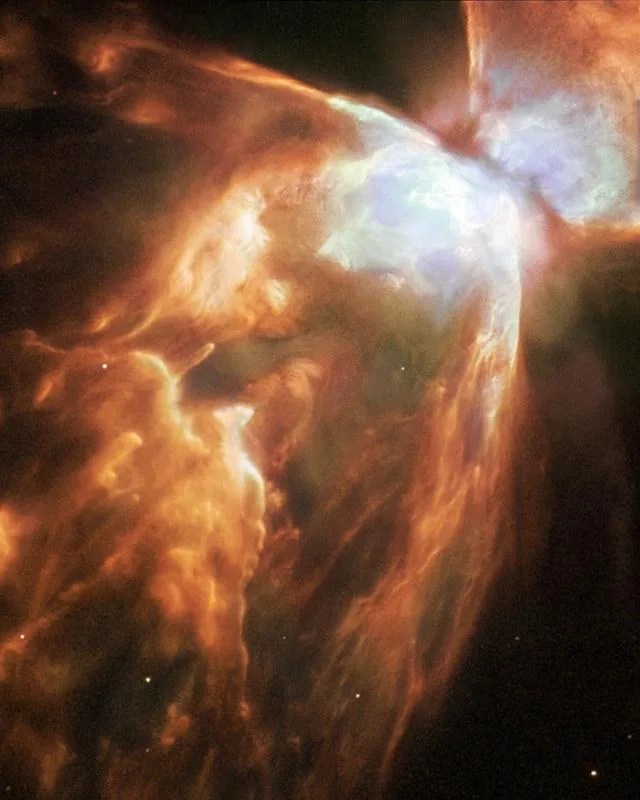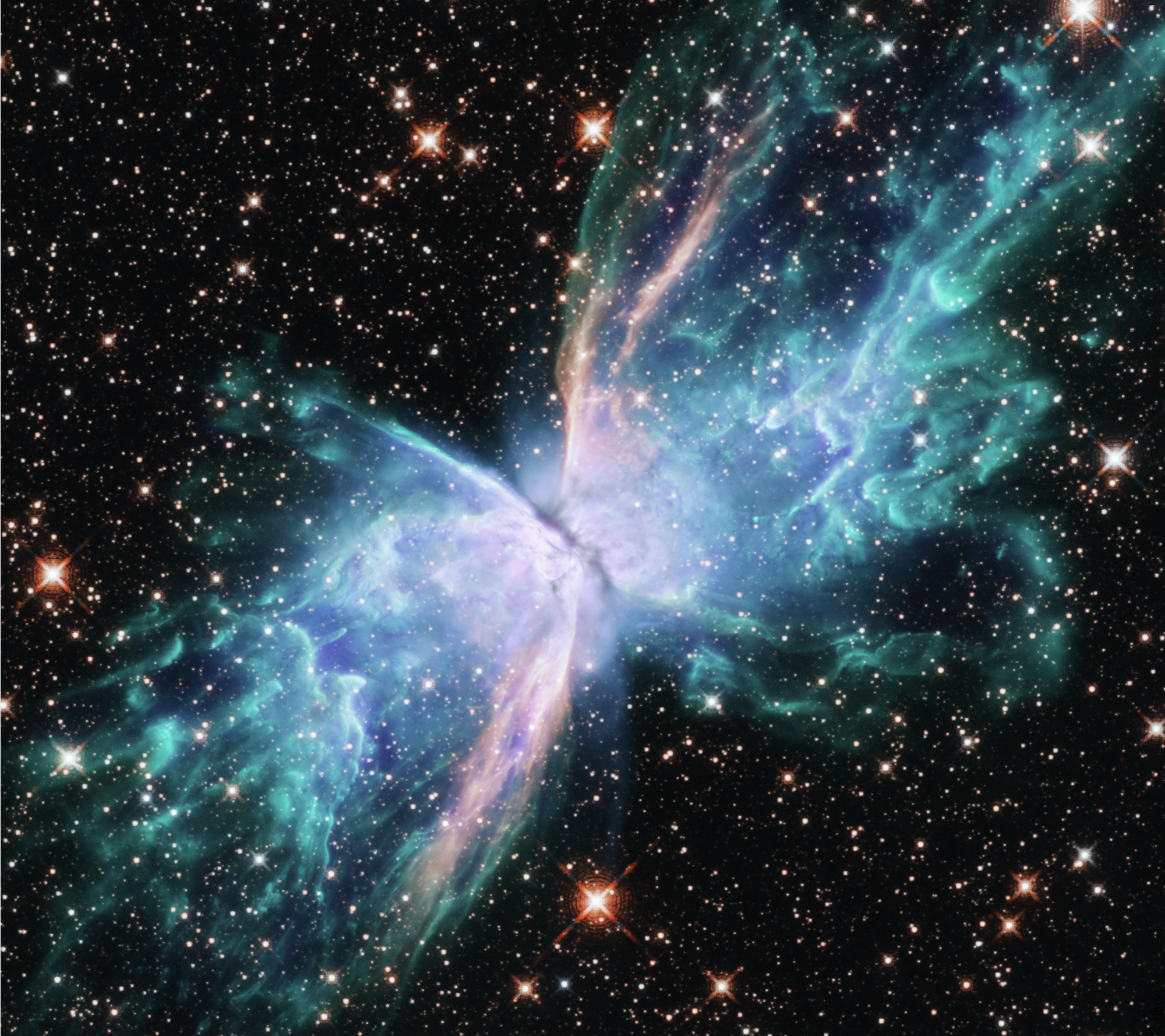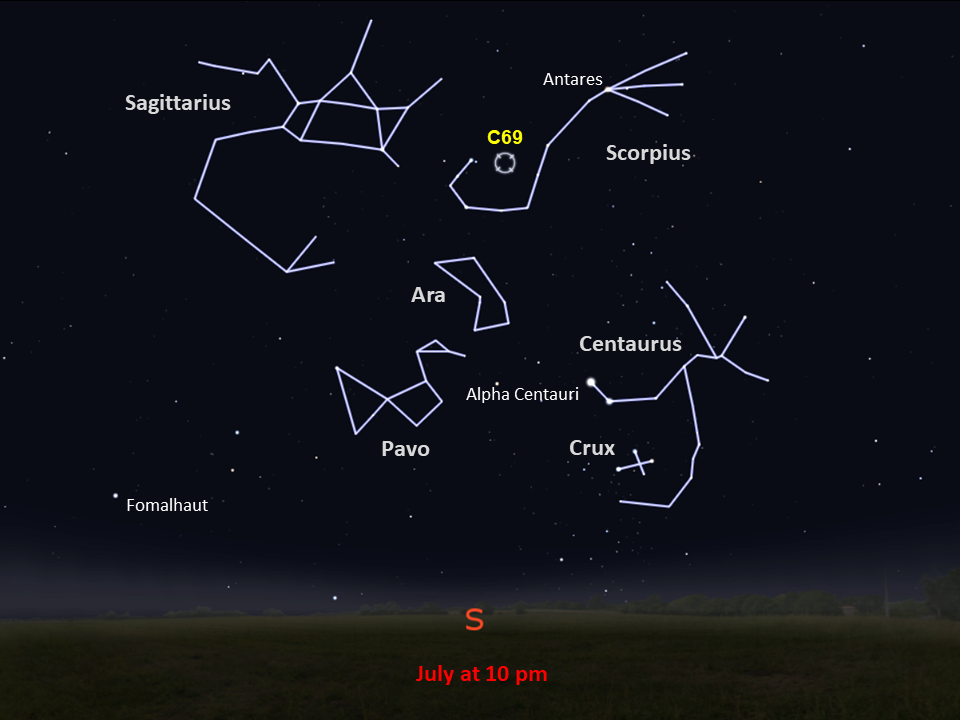Caldwell 69
A dying Sun-like star is ejecting layers of gas to create Caldwell 69, giving it the more common names of the Butterfly or Bug Nebula.
Distance
4,000 light-years
Apparent Magnitude
9.5
constellation
Scorpius
object type
Planetary Nebula

This structure may look like a cosmic butterfly unfurling its celestial wings, but there’s nothing gentle or delicate about this massive blowout. In Caldwell 69, also cataloged as NGC 6302 and commonly known as the Butterfly or Bug Nebula, layers of gas are being ejected from a Sun-like star that has exhausted its nuclear fuel. Medium-mass stars grow unstable as they run out of fuel, which leads to the dramatic expulsion of material into space at speeds of over a million miles per hour. Streams of energetic ultraviolet radiation cause the cast-off material to glow, but eventually the nebula will fade and leave behind only a small stellar corpse called a white dwarf. Our middle-aged Sun can expect a similar fate once it runs out of fuel in about 5 billion years.


Nebulae like Caldwell 69 are known as planetary nebulae but are not related to planets. The term was coined by astronomer William Herschel, who discovered the Butterfly Nebula in 1826. Through his small telescope, planetary nebulae had the appearance of glowing, planet-like orbs. While stars that generate planetary nebulae may have once had planets in orbit about them, scientists expect that the fiery death throes these stars undergo will ultimately destroy or leave any attending planets completely uninhabitable.
The Butterfly Nebula is located about 4,000 light-years away in the constellation Scorpius. Hubble obtained this close-up view in 2009 using its Wide Field Camera 3, installed by astronauts during the final shuttle servicing mission. These observations detected the nebula’s central star for the first time. Astronomers also compared the 2009 observations to those taken by Hubble’s Wide Field and Planetary Camera 2 in 2000 to determine the motions of the two lobes of ejected material, which appear to have been created rapidly in an event 2,250 years ago. Other parts of the nebula, specifically a dense, massive torus of material around the central star, were produced more slowly, starting about 5,000 years ago and then terminating about 2,900 years ago, preceding the lobe ejection. The delay between these events offers clues to how the stellar environment was modified as the central star evolved.
The Butterfly Nebula is highest and best viewed in the Southern Hemisphere during winter. From the Northern Hemisphere, its best season is the summer, but for most observers it will appear quite low above the southern horizon. With a magnitude of 9.5, the nebula is just visible with binoculars in dark skies, but a telescope will provide better views. In Hubble’s image above, filters that isolate emission from oxygen, helium, hydrogen, nitrogen, and sulfur from the planetary nebula were used to create a composite color image. Through your telescope, you can expect to see something more reminiscent of a small, smoky eraser smudge. Use a medium to large telescope under dark skies to make out the nebula’s butterfly shape.
For more information about Hubble’s observations of Caldwell 69, see:
Butterfly Emerges from Stellar Demise in Planetary Nebula NGC 6302
Demise in Fire and Ice
Hubble Provides Holistic View of Stars Gone Haywire
NASA, ESA, and G. Bacon (STScI)

Glossary
Magnitude - The brightness of an astronomical object, represented by a number; bright objects have low numbers on the magnitude scale, while dim objects have high numbers.
Nebula - An interstellar cloud of dust and gas; either a location where new stars are being forged or a cloud of material ejected into space by a dying star.
Planetary Nebula - An expanding shell of gas around an aging or dying Sun-like star, cast off by the star.
White Dwarf - The core of a dead Sun-like star whose outer layers have been expelled into space.
Explore Hubble's Caldwell Catalog
The following pages contain some of Hubble’s best images of Caldwell objects.

Caldwell 1
Also known as NGC 188, this group of stars formed from a large cloud of gas making the stars roughly…

Caldwell 2
This shell of gas is expanding outward, away from the dying star within.

Caldwell 3
This barred spiral galaxy was first spotted by British astronomer William Herschel in April 1793 in the constellation Draco.




